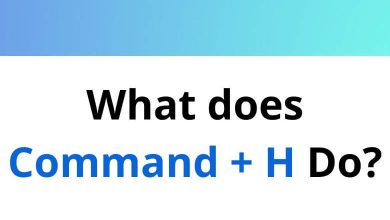What is a Special Character?
In computing and digital text, characters play a fundamental role in encoding and displaying information. Among these characters, a distinct category known as special characters stands out.
Table of Contents
- 1 Definition of a Special Character
- 2 Examples of Special Characters
- 3 Categories of Special Characters
- 4 Special Characters in Different Contexts
- 5 Special Characters in Different Languages and Cultures
- 6 How to type Special Characters with Keyboard Shortcuts?
- 7 Can we use special characters in passwords?
- 8 Conclusion
These characters are different from standard alphanumeric characters (A-Z, a-z, 0-9) and often serve functional or representational purposes in text processing, programming, and online security. This blog will delve into the definition, types, uses, and importance of special characters in various contexts.
Definition of a Special Character
A special character is any character that is not a letter (A-Z, a-z) or a digit (0-9). Special characters include punctuation marks, symbols, whitespace characters, mathematical operators, and control characters. These characters often have unique meanings in different computing environments, programming languages, and online platforms.
Examples of Special Characters
Some common special characters include:
- Punctuation Marks: ! @ # $ % ^ & * ( ) – _ = + [ ] { } | \ ; : ‘ ” , < > . / ?
- Whitespace Characters: Space ( ), Tab (\t), Newline (\n)
- Mathematical Operators: + – * / % =
- Programming Symbols: { } ( ) [ ] ; : , .
- Control Characters: Escape (\), Backspace (\b), Carriage Return (\r)
- Currency Symbols: $ € ¥ £ ₩
Categories of Special Characters
Special characters can be broadly categorized based on their functions:
1. Punctuation Marks
These characters help structure written language, clarify meaning, and indicate pauses or tone. While they’re essential for readable text, they also serve specific functions in computing contexts.
For instance, the period (.) isn’t just for ending sentences—it’s used in file extensions (.jpg, .pdf), IP addresses (192.168.1.1), and as the decimal point in numbers.
2. Operator Symbols
Characters like +, -, *, /, =, <, and > primarily represent mathematical or logical operations. In programming languages, they perform calculations, comparisons, and assignments.
3. Special-Purpose Symbols
Some characters serve specific functions in computing:
- @ (at sign): Separates username from domain in email addresses
- (hash or pound sign): Indicates comments in many programming languages, hashtags on social media, or anchors in URLs
- & (ampersand): Represents logical AND in programming, joins parameters in URLs, and stands for “and” in some texts
- _ (underscore): Often used in place of spaces in filenames, variables, and URLs
4. Control Characters
These invisible characters control how text is displayed or processed:
- Spaces, tabs, and returns that affect text layout
- Escape sequences like “\n” (newline) or “\t” (tab) in programming
- NULL, backspace, and other non-printing control characters
Special Characters in Different Contexts
Special characters have different meanings and applications depending on the context. Below are some of the common uses of special characters in computing, security, and digital communication.
1. Special Characters in Programming
In programming languages, special characters play a critical role in syntax and logic. These characters can denote operations, delimit statements, or escape sequences.
- Escape Characters: Used to represent special characters in string literals.
Example in Python: \n for newline, \t for tab.
- Operators: Used for arithmetic and logical operations.
Example in JavaScript: && (logical AND), || (logical OR).
- Brackets and Delimiters: Define code structure.
Example in C++: {} enclose function bodies, [] represent arrays.
2. Special Characters in Passwords
Special characters play a crucial role in password security. Many systems require passwords to include at least one special character to enhance security.
- Example of a strong password: P@ssw0rd!2025
- Special characters in passwords prevent brute force attacks by increasing complexity.
3. Special Characters in Regular Expressions
Regular expressions (regex) use special characters to define search patterns.
- . (dot) matches any single character.
- * (asterisk) matches zero or more repetitions of the preceding character.
- ^ (caret) indicates the start of a string.
- $ (dollar sign) represents the end of a string.
- Example: The regex ^a.*z$ matches any string that starts with a and ends with z.
4. Special Characters in HTML & Web Development
In HTML and web development, special characters need to be represented using character entities to be properly displayed in web pages.
- < for < (less than symbol)
- > for > (greater than symbol)
- & for & (ampersand)
- " for ” (double quote)
- ' for ‘ (single quote)
5. Special Characters in File Names and URLs
Some operating systems and web servers have restrictions on file names and URLs due to special characters.
- Reserved characters in URLs: : / ? # [ ] @ ! $ & ‘ ( ) * + , ; =
- File system restrictions: Windows does not allow \ / : * ? ” < > | in file names.
- Encoding special characters: Spaces in URLs are often replaced with %20.
6. Special Characters in Social Media and Text Communication
Social media platforms and messaging applications use special characters for emojis, mentions, and hashtags.
- @username for mentions.
- #hashtag for topic trends.
- Emojis are represented as Unicode characters (e.g., 😊 U+1F60A).
Special Characters in Different Languages and Cultures
Beyond the Latin alphabet used in English, other writing systems have their own special characters. These include:
- Diacritical marks that modify letters (é, ñ, ö)
- Symbols unique to non-Latin scripts (¥, ₹, §)
- Characters with cultural significance like ☯, ✝, or ☪
How to type Special Characters with Keyboard Shortcuts?
Here’s a table with the special characters you provided, including their names, usage, Unicode representations, and any applicable keyboard shortcuts:
| Special Character | Name | Usage | Unicode | Keyboard Shortcut |
|---|---|---|---|---|
| ~ | Tilde | Used in programming and URL encoding | U+007E | Shift + ` |
| ` | Backtick/Accent | Used in programming for inline code blocks | U+0060 | ` |
| ! | Exclamation Mark | Indicates emphasis or excitement | U+0021 | Shift + 1 |
| @ | At Symbol | Used in email addresses and social media | U+0040 | Shift + 2 |
| # | Hashtag | Used in social media for topics or programming | U+0023 | Shift + 3 |
| $ | Dollar Sign | Represents currency or denotes money | U+0024 | Shift + 4 |
| % | Percent Sign | Represents a percentage in numbers | U+0025 | Shift + 5 |
| ^ | Caret | Used in math or programming for exponentiation | U+005E | Shift + 6 |
| & | Ampersand | Represents the word “and” in text or programming | U+0026 | Shift + 7 |
| * | Asterisk | Used for multiplication or as a wildcard | U+002A | Shift + 8 |
| ( ) | Parentheses | Encloses additional information or used in math | U+0028, U+0029 | Shift + 9, Shift + 0 |
| – | Hyphen/Minus Sign | Indicates subtraction or negative values | U+002D | – |
| _ | Underscore | Used in variable names or for emphasis in text | U+005F | Shift + – |
| + | Plus Sign | Indicates addition or positive values | U+002B | Shift + = |
| = | Equal Sign | Indicates equality in math or programming | U+003D | = |
| { } | Curly Braces | Used in programming to define code blocks | U+007B, U+007D | Shift + [, Shift + ] |
| [ ] | Square Brackets | Used in programming to define arrays or lists | U+005B, U+005D | [, ] |
| | | Pipe | Used in programming for logical OR or piping | U+007C | Shift + \ |
| \ | Backslash | Used in programming for escape characters | U+005C | \ |
| / | Forward Slash | Separates items in a path or used in programming | U+002F | / |
| : | Colon | Separates hours from minutes in time or ratios | U+003A | Shift + ; |
| ; | Semicolon | Used to separate items in a list or indicate a pause | U+003B | ; |
| “ | Double Quote | Indicates speech or quotes text | U+0022 | Shift + ‘ |
| ‘ | Single Quotation Mark | Indicates possession or contraction | U+0027 | ‘ |
| < | Less Than Sign | Used in programming or comparisons | U+003C | Shift + , |
| > | Greater Than Sign | Used in programming or comparisons | U+003E | Shift + . |
| , | Comma | Separates items in a list | U+002C | , |
| . | Period | Ends a sentence or indicates a decimal point | U+002E | . |
| ? | Question Mark | Indicates a question in text or programming | U+003F | Shift + / |
Can we use special characters in passwords?
It’s a good idea to use special characters in your passwords. They make your passwords much stronger and more secure, which means it’s harder for bad guys to figure them out using tricks like trying lots of different combinations or using common words.
When you’re making a password, it’s smart to mix in both big and small letters, numbers, and special symbols. This mix makes your password strong and unique, making it tough for anyone to hack into your accounts.
Here are a few tips for creating secure passwords:
- Use a Mix of Character Types: Combine uppercase and lowercase letters, numbers, and special characters.
- Avoid Common Words: Avoid using easily guessable words or phrases, as they are more vulnerable to attacks.
- Create Long Passwords: Longer passwords are generally more secure. Aim for a minimum of 12 characters.
- Avoid Personal Information: Do not use easily accessible personal information, such as names, birthdays, or addresses.
Conclusion
Special characters may seem like minor elements in the vast world of digital text, but they’re fundamental to how we structure information, secure our data, and express meaning in computing. From the humble comma to complex mathematical symbols, these non-alphanumeric characters extend our ability to communicate precisely in the digital realm.
Understanding how and when to use special characters—and being aware of their varying meanings across different contexts—is an essential digital literacy skill for anyone working with text, code, or digital communications in today’s connected world.
READ NEXT:





